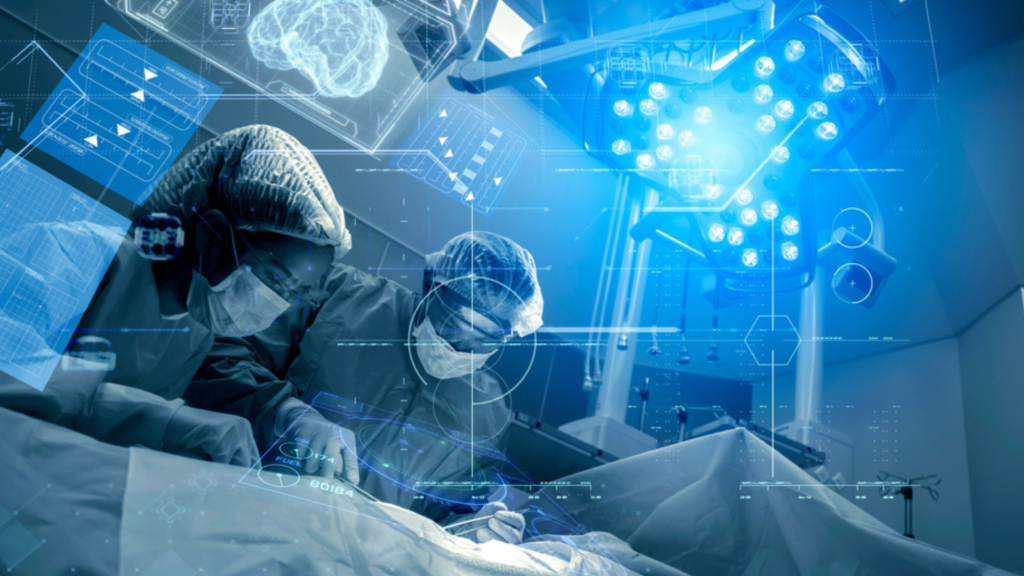
In the dynamic landscape of modern medicine, the integration of robotic technology has sparked a revolution in surgical practices, particularly within the realm of urology. Robotic urological surgery stands at the forefront of this innovation, offering a myriad of benefits that redefine the standard of care for patients facing urological conditions. From enhancing precision to expediting recovery, the advantages of robotic-assisted techniques are reshaping the landscape of urological surgery.
In this blog post, we embark on a journey to unravel the myriad benefits of robotic urological surgery. From the intricate manoeuvres facilitated by robotic arms to the enhanced visualisation provided by cutting-edge imaging technology, we delve into the transformative impact of robotics on patient outcomes and quality of care. Join us as we explore how robotic urological surgery is revolutionising the field, ushering in a new era of precision, efficiency, and compassion in the treatment of urological conditions.
- Precision and Dexterity
Robotic System Capabilities: Robotic urological surgery employs advanced robotic systems equipped with state-of-the-art technology. These systems typically consist of a surgeon console, a patient-side cart with robotic arms, and a high-definition 3D imaging system. The surgeon operates from the console, controlling the robotic arms with high precision.
Precise Movements with Tremor Filtration: One of the key advantages of robotic systems is their ability to filter out tremors, allowing for exceptionally steady movements. This feature is particularly beneficial in urological procedures where even the slightest tremor can have significant consequences. With tremor filtration, surgeons can execute precise movements with confidence, minimizing the risk of inadvertent tissue damage.
Enhanced Accuracy in Intricate Maneuvers: The robotic arms used in urological surgery are equipped with instruments that replicate the movements of the surgeon’s hands with remarkable accuracy. These instruments can rotate 360 degrees and have multiple degrees of freedom, allowing for a wide range of motion within the confined spaces of the body. As a result, surgeons can perform intricate manoeuvres with enhanced precision, such as suturing delicate tissues or dissecting vital structures.
Applications in Delicate Urological Procedures: The precision offered by robotic urological surgery is particularly invaluable in delicate procedures such as prostatectomy, nephrectomy, and pyeloplasty. In prostatectomy, for example, the robotic system enables surgeons to precisely dissect the prostate gland while preserving surrounding nerves and tissues crucial for urinary and sexual function. Similarly, in nephrectomy (removal of the kidney) and pyeloplasty (repair of the ureteropelvic junction), robotic assistance allows for meticulous tissue handling and precise reconstruction, minimizing the risk of complications.
Preservation of Surrounding Tissues: Preservation of surrounding tissues is paramount in urological surgery to minimize postoperative complications and preserve patient quality of life. The enhanced precision offered by robotic systems facilitates meticulous dissection while minimizing trauma to adjacent structures. This is particularly critical in procedures involving the removal or reconstruction of organs like the prostate or kidney, where preserving surrounding nerves, blood vessels, and ureters is essential for optimal outcomes.
Surgeon Training and Proficiency: Robotic urological surgery requires specialized training and proficiency to maximize the benefits of the technology. Surgeons undergo extensive training on robotic systems, including simulation-based exercises and proctoring by experienced mentors. Mastery of robotic-assisted techniques allows surgeons to leverage the precision and dexterity of the technology effectively, translating into improved patient outcomes.
- Enhanced Visualisation
Magnified View of the Surgical Site: The robotic console provides surgeons with a magnified view of the surgical field, allowing for precise visualization of anatomical structures with exceptional clarity. This magnification enables surgeons to identify intricate anatomical landmarks and structures that may be challenging to visualize with the naked eye. As a result, surgeons can navigate complex anatomy with confidence, reducing the risk of inadvertent damage to surrounding tissues.
Better Anatomical Orientation: Enhanced visualization provided by robotic systems allows surgeons to achieve better anatomical orientation during urological procedures. Surgeons can accurately identify critical structures such as blood vessels, nerves, and ureters, facilitating meticulous dissection and tissue manipulation. This improved anatomical orientation is particularly crucial in procedures involving intricate structures, such as nerve-sparing techniques in prostatectomy or dissection around the renal hilum in nephrectomy.
Precise Tissue Dissection: The magnified and three-dimensional visualization offered by robotic systems enables surgeons to perform precise tissue dissection with greater accuracy. Surgeons can visualize tissue planes and boundaries more clearly, allowing for meticulous dissection while minimizing trauma to surrounding tissues. This precision is essential for achieving optimal surgical outcomes and reducing the risk of postoperative complications such as bleeding or injury to adjacent structures.
- Reduced Blood Loss and Complications
Robotic urological surgery is associated with significantly reduced blood loss compared to traditional open surgery. The minimally invasive nature of robotic procedures, combined with finer tissue dissection and cauterization capabilities, helps minimize intraoperative bleeding. Moreover, the smaller incisions result in reduced postoperative pain, lower risk of infection, and faster recovery times for patients.
- Faster Recovery and Shorter Hospital Stays
- Patients undergoing robotic urological surgery typically experience shorter hospital stays and faster recovery compared to traditional open surgery. The minimally invasive approach and smaller incisions result in less trauma to surrounding tissues, leading to reduced postoperative pain and faster wound healing. As a result, patients can return to their normal activities and daily routines sooner, with minimal disruption to their lives.
- Improved Functional Outcomes
- Robotic-assisted techniques offer superior preservation of anatomical structures and nerve bundles, leading to improved functional outcomes in urological procedures. For example, in robotic prostatectomy, the precise nerve-sparing capabilities of the robotic system help minimize the risk of erectile dysfunction and urinary incontinence postoperatively. Similarly, in procedures such as partial nephrectomy, the preservation of renal function is optimized, leading to better long-term outcomes for patients.
- Surgeon Ergonomics and Comfort
- Robotic urological surgery enhances surgeon ergonomics and comfort during prolonged procedures. The robotic console allows surgeons to operate in a seated position, with ergonomic hand and foot controls that minimize physical strain and fatigue. This ergonomic design not only improves surgeon comfort but also enhances surgical precision and efficiency, ultimately benefiting patient outcomes.
- Oncological Outcomes and Cancer Control
- In the realm of oncological surgery, robotic-assisted techniques have demonstrated excellent cancer control and oncological outcomes. Studies have shown comparable oncological efficacy between robotic and open surgical approaches in various urological malignancies, including prostate cancer, kidney cancer, and bladder cancer. The precise dissection and meticulous tissue handling afforded by robotic systems contribute to optimal tumour resection margins and improved cancer control rates.
Conclusion
The benefits of robotic urological surgery are undeniable, marking a transformative era in the field of urology. With its unparalleled precision, enhanced visualisation, and reduced invasiveness, robotic-assisted techniques have redefined the standard of care for complex urological procedures. From shorter recovery times and improved functional outcomes to superior oncological control, the impact of robotics on patient care is profound and far-reaching. As technology continues to evolve, the future holds even greater promise for robotic urological surgery, paving the way for continued advancements in surgical techniques and patient outcomes. Embracing this innovative approach ensures that patients receive the highest level of care, underscoring the invaluable role of robotics in shaping the future of urological surgery.
Dr. Sumit Sharma is an experienced urologist, andrologist, and kidney transplant surgeon with over 20 years of clinical experience. He is the founder of the Department of Urology at multiple hospitals in Gurgaon and has established successful kidney transplant programs across the city. With a commitment to the highest standards, Dr. Sumit Sharma ensures personalised, professional treatment, making your well-being the primary focus. Choose Dr. Sumit Sharma for outstanding Urological care in Gurgaon.



